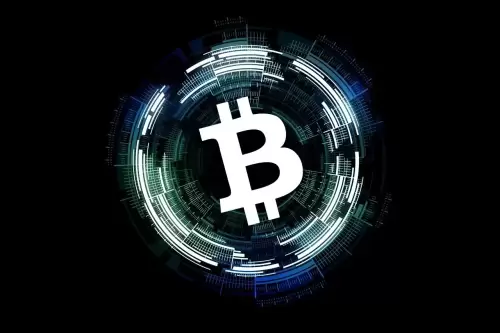 |
|
 |
|
 |
|
 |
|
 |
|
 |
|
 |
|
 |
|
 |
|
 |
|
 |
|
 |
|
 |
|
 |
|
 |
|
Cryptocurrency News Articles
Coinbase, Stablecoin, and Regulatory Tailwinds: A Perfect Storm?
Jun 29, 2025 at 04:29 am
Coinbase is riding high on regulatory tailwinds, especially with the GENIUS Act. But is it all smooth sailing for the crypto exchange and stablecoins?

Coinbase is making waves in the crypto world, fueled by regulatory progress and strategic moves in the stablecoin space. With the GENIUS Act potentially reshaping the landscape, is Coinbase poised for sustained growth?
Regulatory Clarity: The GENIUS Act Effect
June 2025 was a banner month for Coinbase, with its stock price jumping 43% after the Senate passed the GENIUS Act. This landmark bill establishes federal oversight for stablecoins, a game-changer for companies like Coinbase that have been operating in a regulatory gray area. The Act legalizes non-bank stablecoin issuance, sets reserve requirements, and preempts state-level overregulation. For Coinbase, which earns a chunk of change from USDC reserve income through its partnership with Circle, this is huge.
Coinbase's Stablecoin Revenue Engine
While trading volumes might fluctuate, Coinbase's indirect stablecoin revenue streams are quietly booming. USDC, the second-largest stablecoin, is a cash cow, generating income through reserve interest and transaction fees. In Q1 2025, this revenue hit $298 million, a cool 15% of Coinbase's net revenue. And with projections of USDC's market cap reaching $100 billion by 2026, things are looking up.
Beyond Trading: Stablecoin Yield Products
Coinbase isn't just about trading. Its Coinbase One Card and USDC-integrated Shopify payments are driving USDC adoption and creating recurring revenue channels. The GENIUS Act's transparency rules could even attract institutional investors to stablecoins like USDC, further boosting its market share.
Why Coinbase Might Be Undervalued
Despite concerns about trading volumes, Coinbase's regulatory and structural advantages might be underappreciated. The company recently snagged the first U.S.-based Markets in Crypto-Assets (MiCA) license from Luxembourg, opening up a massive market in the EU. Plus, the acquisition of Deribit positions Coinbase to dominate the crypto derivatives market. Even with a seemingly high forward P/E multiple, analysts project significant net income growth, making Coinbase an attractive investment.
The Perpetual Futures Play
Coinbase is also diving into perpetual-style futures contracts in the U.S., becoming one of the first regulated players to offer a product similar to offshore perpetuals. This move could bring regulated access to complex derivatives for U.S.-based traders and further expand Coinbase's derivatives footprint.
The Incentive Problem: PayPal's Take
PayPal's CEO, Alex Chriss, recently pointed out a key challenge: the lack of incentives for US consumers to adopt stablecoins. While merchants might like the lower costs of blockchain-based payments, consumers need a reason to switch. PayPal is experimenting with rewards and yield programs to make stablecoins more appealing, particularly for cross-border payments.
Risks and the Road Ahead
Of course, there are risks. Delays in the House regarding the GENIUS Act could cause short-term volatility. But with bipartisan support and pressure from President Trump, a compromise is likely. Keep an eye on House progress – any delay beyond September could trigger short-term volatility.
Final Thoughts: Buy the Dip?
With a $78 billion market cap and a $400 price target from some analysts, Coinbase's stock is looking good. The regulatory tailwinds are here, the stablecoin opportunity is real, and Coinbase is well-positioned to capitalize. So, should you buy the dip? Well, that's up to you, but the stage is set for an exciting ride.
Disclaimer:info@kdj.com
The information provided is not trading advice. kdj.com does not assume any responsibility for any investments made based on the information provided in this article. Cryptocurrencies are highly volatile and it is highly recommended that you invest with caution after thorough research!
If you believe that the content used on this website infringes your copyright, please contact us immediately (info@kdj.com) and we will delete it promptly.






























































